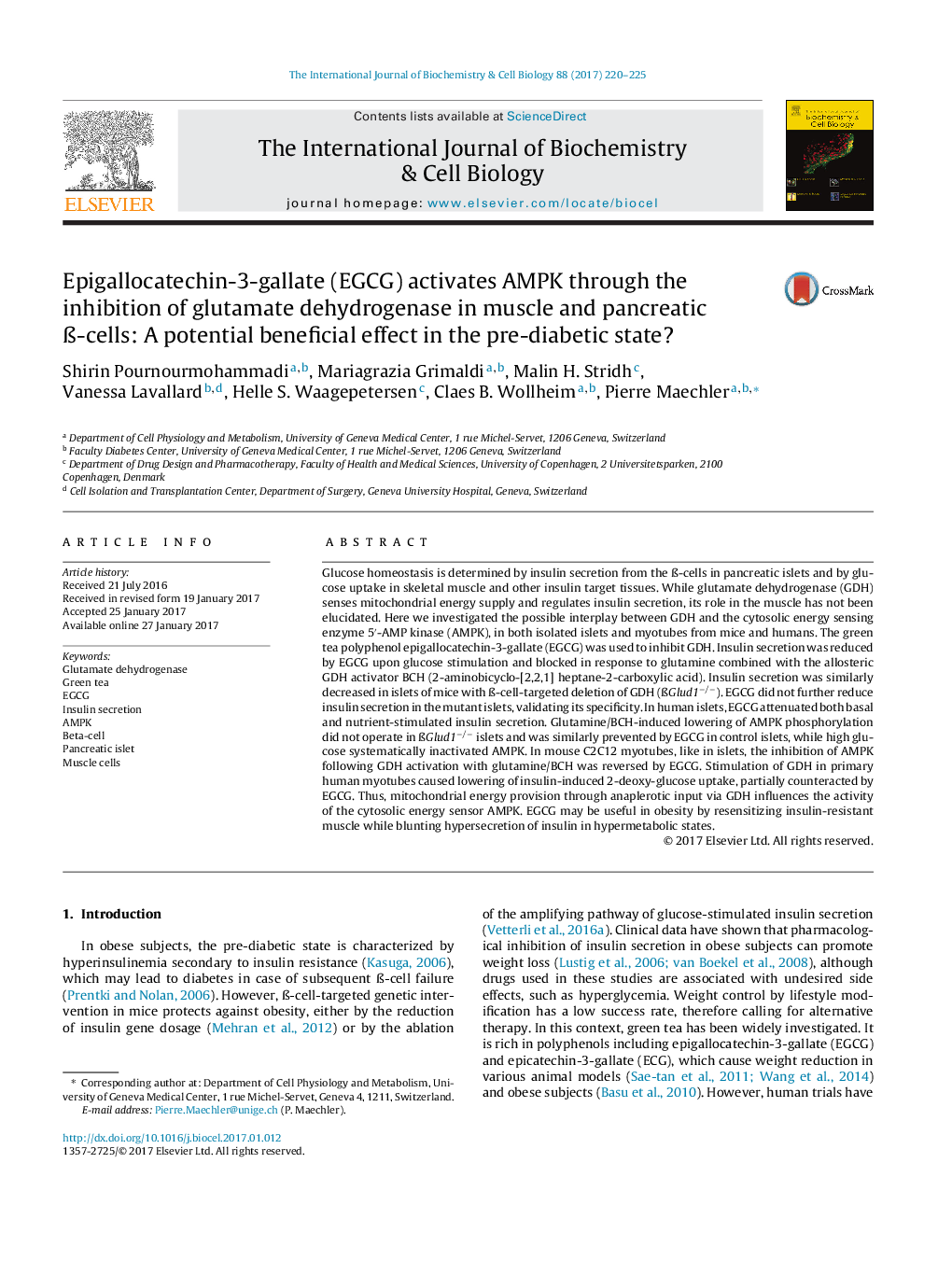| کد مقاله | کد نشریه | سال انتشار | مقاله انگلیسی | نسخه تمام متن |
|---|---|---|---|---|
| 5511362 | 1539854 | 2017 | 6 صفحه PDF | دانلود رایگان |

Glucose homeostasis is determined by insulin secretion from the Ã-cells in pancreatic islets and by glucose uptake in skeletal muscle and other insulin target tissues. While glutamate dehydrogenase (GDH) senses mitochondrial energy supply and regulates insulin secretion, its role in the muscle has not been elucidated. Here we investigated the possible interplay between GDH and the cytosolic energy sensing enzyme 5â²-AMP kinase (AMPK), in both isolated islets and myotubes from mice and humans. The green tea polyphenol epigallocatechin-3-gallate (EGCG) was used to inhibit GDH. Insulin secretion was reduced by EGCG upon glucose stimulation and blocked in response to glutamine combined with the allosteric GDH activator BCH (2-aminobicyclo-[2,2,1] heptane-2-carboxylic acid). Insulin secretion was similarly decreased in islets of mice with Ã-cell-targeted deletion of GDH (ÃGlud1â/â). EGCG did not further reduce insulin secretion in the mutant islets, validating its specificity. In human islets, EGCG attenuated both basal and nutrient-stimulated insulin secretion. Glutamine/BCH-induced lowering of AMPK phosphorylation did not operate in ÃGlud1â/â islets and was similarly prevented by EGCG in control islets, while high glucose systematically inactivated AMPK. In mouse C2C12 myotubes, like in islets, the inhibition of AMPK following GDH activation with glutamine/BCH was reversed by EGCG. Stimulation of GDH in primary human myotubes caused lowering of insulin-induced 2-deoxy-glucose uptake, partially counteracted by EGCG. Thus, mitochondrial energy provision through anaplerotic input via GDH influences the activity of the cytosolic energy sensor AMPK. EGCG may be useful in obesity by resensitizing insulin-resistant muscle while blunting hypersecretion of insulin in hypermetabolic states.
Journal: The International Journal of Biochemistry & Cell Biology - Volume 88, July 2017, Pages 220-225